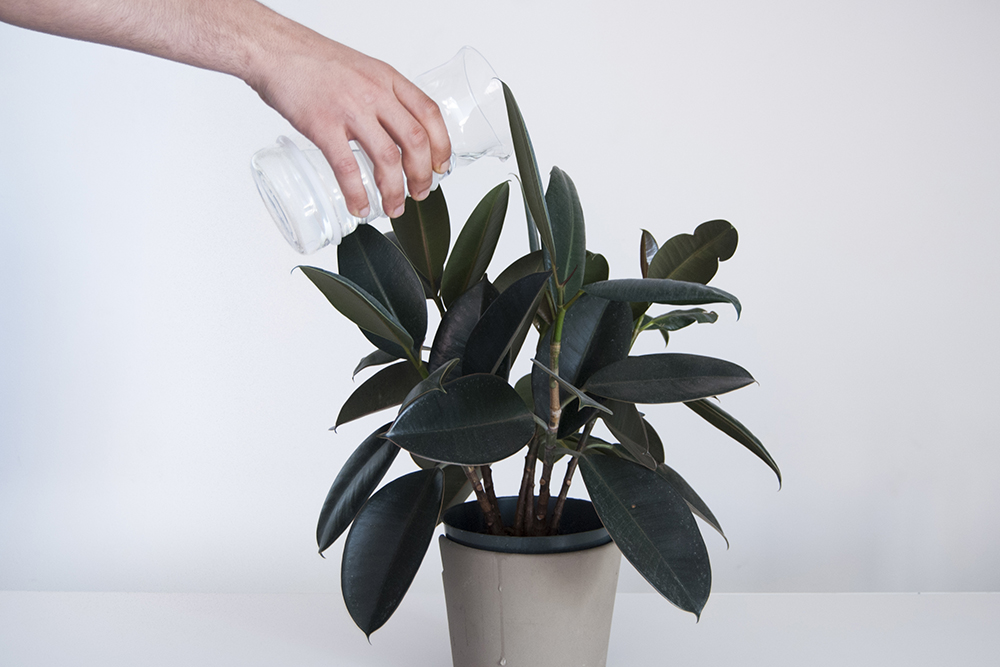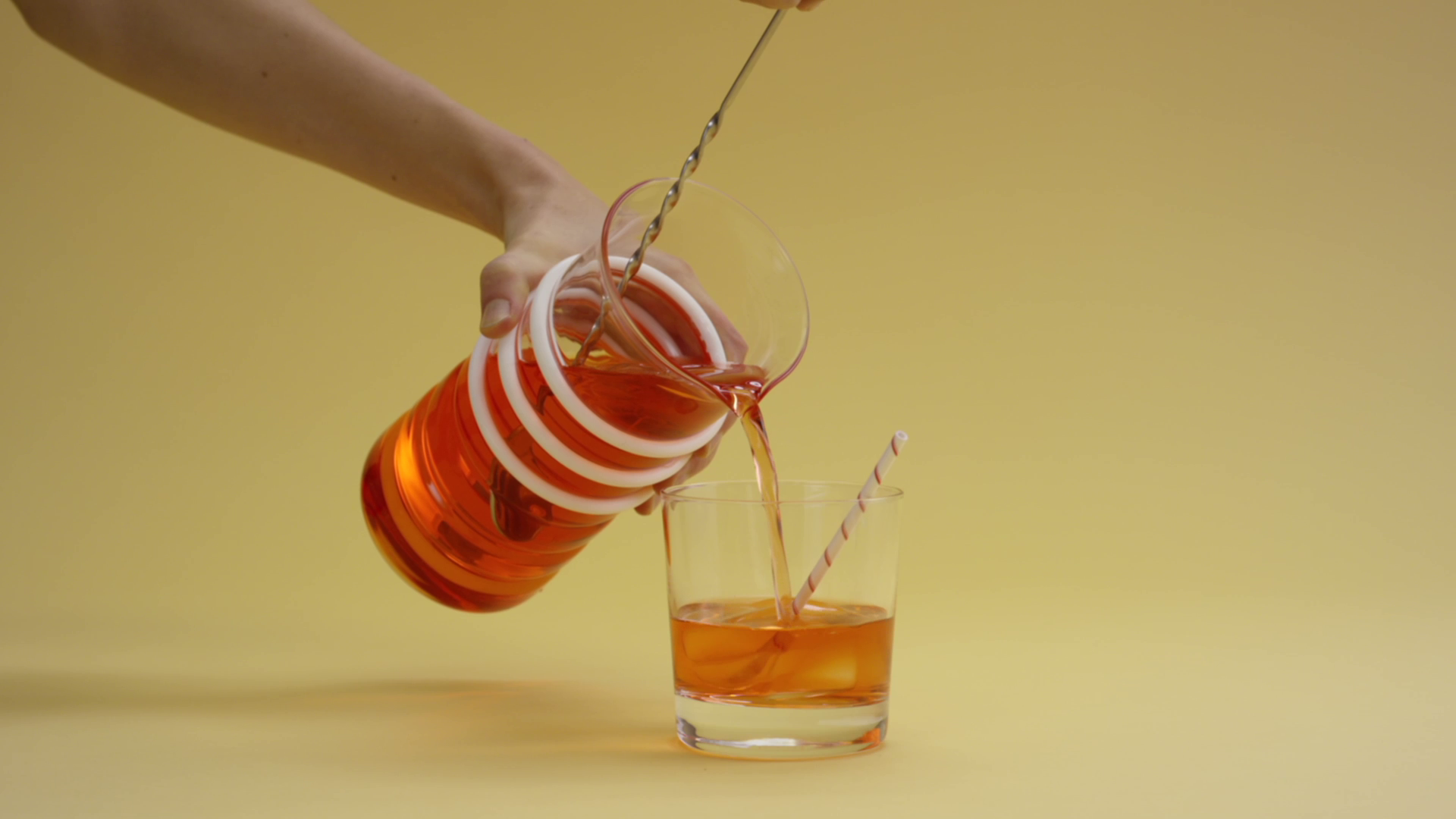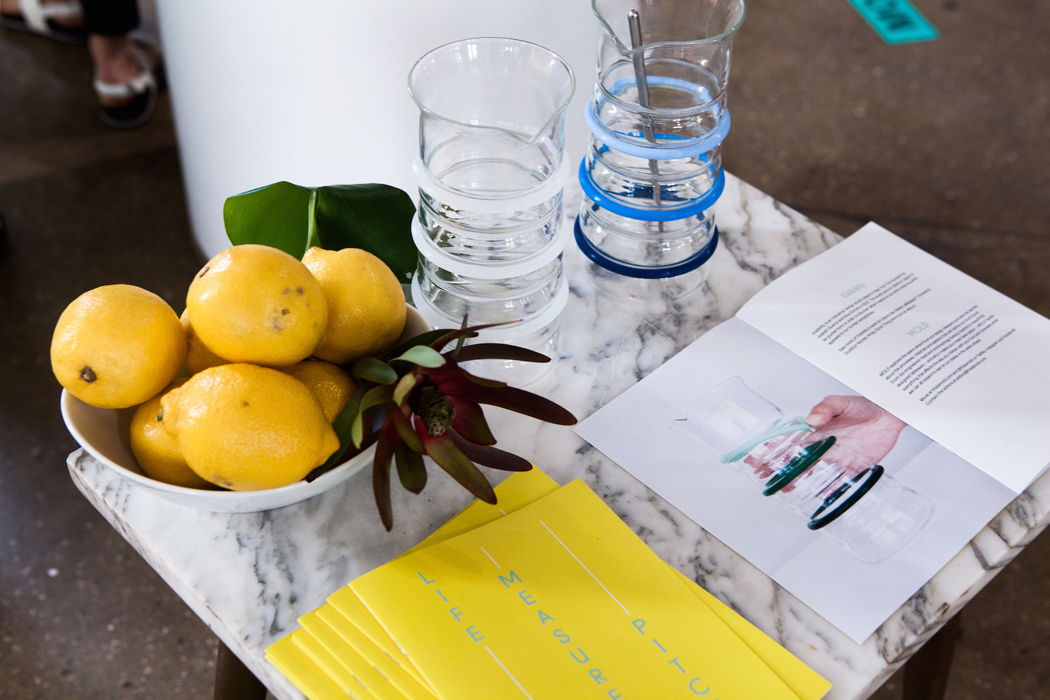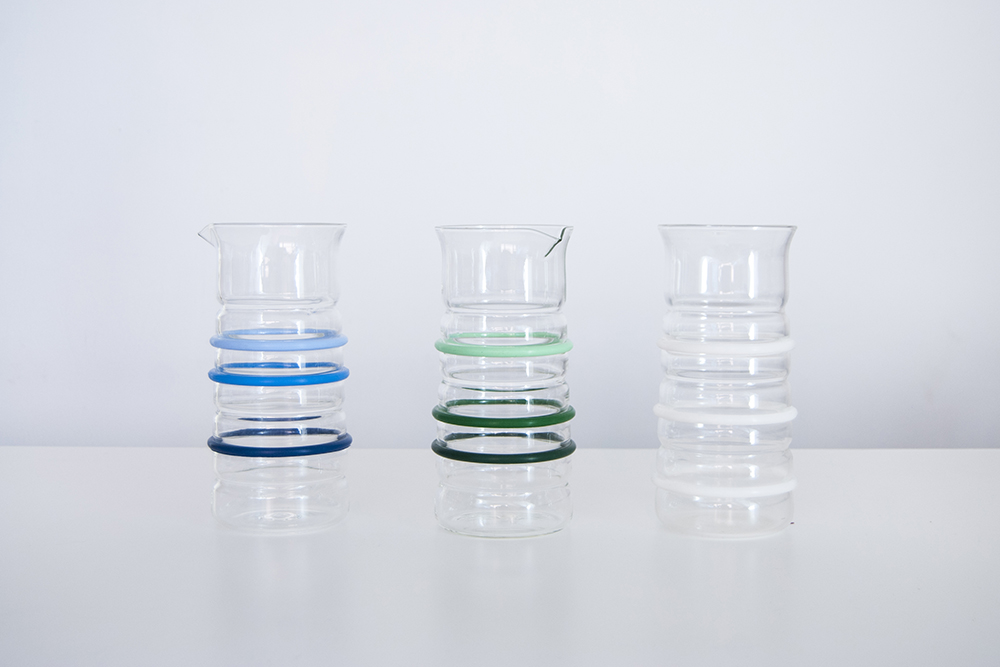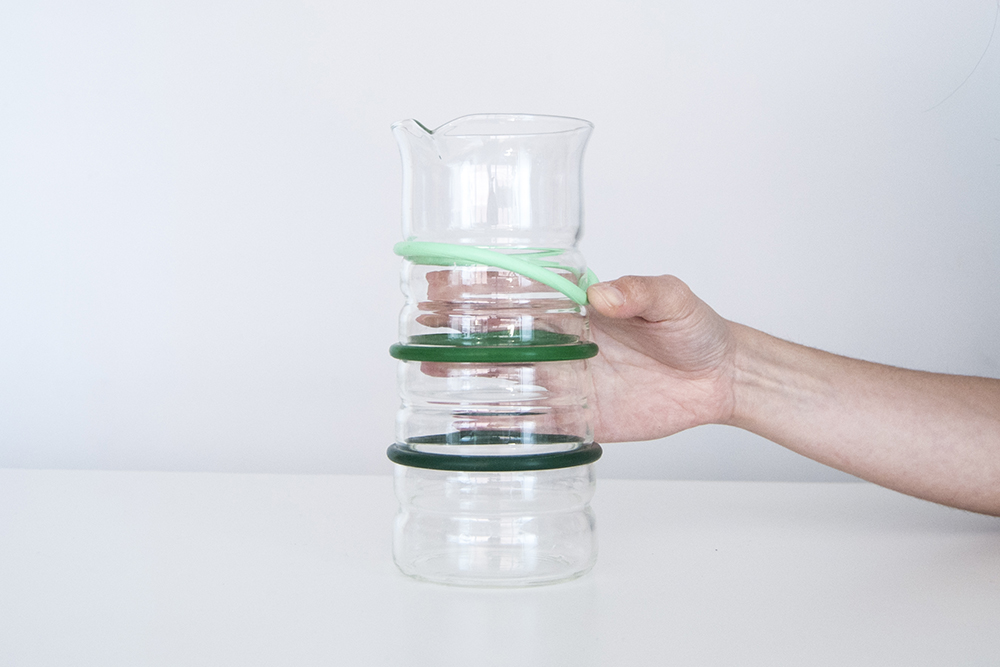To celebrate the launch of the Life Measured pitcher, a collaboration between the editors of MOLD and the design studio Visibility, we spoke to creative practitioners about the delights of their daily routines.
Here, Taylor Johnston, Horticulturist at the Isabella Stewart Gardner Museum and Founder of Gamine Co. Workwear, shares her plant watering philosophy, thoughts on experimental gardening and what it’s like to care for thousands of plants every day.
The Life Measured pitcher is now for sale in our STORE.
MOLD: Do you live in an apartment, condo, house? What kind of light does it get? Do you have outdoor space?
Taylor Johnston: I just moved from a small apartment in Cambridge to a small cottage on the south coast of Boston. In spite of leaving the city, I’ve always had part sun or full on shade, and completely envy anyone with southern exposure. I’m fortunate to have a small garden now, which is just the right size considering how much time I have to dedicate to its maintenance. The design is pretty contemporary—formal in-formalism with frothy Dutch wave style plantings in place of a perennial perimeter set around a lawn.
What kinds of plants do you have in your home?
Funny enough, most of my plants live in the Gardner Museum greenhouse as they get lots of love and attention there. Of course, I can’t live without plants at home. I have many container plants indoors and out. Outdoors I dot perennials and woody plants in containers around seating areas and doorways. Indoors I have a small Begonia collection scattered around the house as they are super sensitive to micro-climates. I have a few larger, older terrariums living in my kitchen. In the spot my husband and I pile books we have a large Rubber Plant (for air scrubbing) and a large night blooming Cereus. In place of window boxes I dot the windowsills with ornamental oxalis, Auricula and orchids.
Do you have a favorite plant? Or a favorite plant in your home?
I’m an equal opportunity plant enthusiast. I tend to lean toward the classics and love plants with personality.
What’s your most unusual or surprising plant find?
Probably finding a large Disocactus flagelliformis at a big box store for under 20 bucks. I do not discriminate when it comes to where I buy plants, but I definitely try to support the micro-nano level nurseries whenever possible.
What’s your in-home watering “routine?”
Watering is probably the hardest part about being a horticulturist. It sounds insane, but it truly takes a lifetime to master. The old saying, “the best fertilizer is a gardener’s shadow,” really nails my watering philosophy. I check things first thing in the morning—usually as the sun is coming up—then in the late morning-early afternoon, when I like to water. Often I check things one last time in the evening to try to anticipate the next day’s routine. Truth is, overwatering kills more plants than under watering so I try to hit things at the right time with the right amount of water. I am also super particular about my watering cans. I have two and they are really well designed. One has a tiny spout and is designed for plants that are sensitive to getting water on their leaves. That is probably the nerdiest thing I’ve said in a while.
Watering is probably the hardest part about being a horticulturist. It sounds insane, but it truly takes a lifetime to master.
What are some mistakes you see newbie horticulturists make?
Treating every plant the same or treating every day the same when it comes to watering. Overwatering, potting in too large of a pot, and/or giving too little or too much light are fairly common mistakes. I wish folks would trust their observations more than the internet.
Have you ever “killed” a plant, despite your best intentions?
Of course! Someone once told me the only difference between a green thumb and a black thumb is figuring out what you did wrong and not repeating it. Sometimes killing a plant is the best way to learn.
Are there plants that someone with even the blackest thumb would have a hard time killing?
When they go into a garden supply store, what should they look for? Stay away from succulents and air plants—turns out those are kind of easy to kill. If you have a lot of bright, direct light, start with cactus—Mammillaria are a good bet. They tolerate low water and obviously do well in low humidity. Those with less light can do well with Schefflera—it’s a fairly industrial plant that can tolerate no water and does well in low humidity. Whenever you go to a garden supply store for plants, tap them out of their pots. If they don’t have a solid root mass, walk away. Also, it’s a good idea to look for signs of pests or fuzzy fungal growth on flowers, buds, leaves or potting medium.
How did you become a professional gardener?
I’ve always been a gardener—I grew up on the Underground Railroad in a small town in Maryland between DC and Baltimore. My dad bought this old orchard and built the house I grew up in and the insane gardens around it. One of my earliest memories is helping my dad clear out some overgrown sections of the land and finding an antique diamond ring. The sense of curiosity and excitement never left. Not a day goes by that I don’t feel fortunate to have been exposed to the natural world at such a young age.
What’s the watering routine like at Isabella Stewart Gardner Museum?
The watering routine at the Gardner is bananas. We hand water everything and we only have until 11 AM to get it all done, so we have to work super efficiently. We hand mist the baby’s tears in the courtyard for an hour or two (depending on the season)—too much water pressure and they die back. At the height of the growing season we water almost every plant in the courtyard every day. At any given time there are about 500 plants in the Courtyard (though often more). Only a few plants are planted in the ground (real Fenway marsh) the rest are potted; the Australian Tree fern for instance are super pot bound as they rarely get repotted. They are about 30 years old, so we have to make sure they get enough water everyday or they will loose their fronds. I remember this past winter there was a driving ban in Boston. We still went into the Museum to water the tree fern.
Aside from the courtyard there are roughly 100 plants in the new wing that we water the old fashioned way with watering cans. Outside, the Monk’s garden is irrigated with drip lines, but we occasionally supplement new tree plantings by hand. By this point it’s usually 11 AM and we’re ready for a cup of coffee before moving into the 1,200 square feet of greenhouse space in the Museum. Since the living collection is a mix of desert plants, woody plants and tropical plants, and there is a mixture of new cuttings, established plants or seeds, each plant has its own watering requirements. Once the Museum itself is watered, we make our way to the off site greenhouse, which consists of about 10,000 square feet of plants…there are thousands and thousands of plants in the collection, again each with its own set of requirements. As everything is watered and fertilized by hand, depending on the day, you can spend 8 hours just watering and fertilizing…it’s definitely a labor of love.
What are you most excited about planting for the spring and summer?
This past fall we planted hundreds of Martagon Lily in the Monk’s garden at the Museum. I think florists are starting to figure out how ridiculously charming these guys are. This summer I’m dying to see if they flower as they notoriously take their time setting buds. This spring I’m excited to experiment with a few projects—last year I grew a low water wildflower lawn, which was super fun. I think this year I’m going experiment with growing veggies in partial sun to see what I can get away with.
How “experimental” are you allowed to get with your plans for the garden?
Truthfully, every garden is an experiment. At the Museum we experiment all the time—it’s really important to push the envelope with what we’re growing and when we’re growing it. The Monk’s garden is still fairly young, which means we still work closely with Michael Van Valkenburgh to figure out tweaks. Our job is going to get more fun as the garden ages and we’re allowed to decide what and when to divide, transplant, edit and so forth. The courtyard is often the topic of conversation between myself, my mentors and the museum Director. We reference particular paintings in thinking about color schemes and often decide planting combinations as a committee. I’m super fortunate to be given a loose leash when it comes to plant hunting. The Museum is a big advocate for the garden arts, so it’s important the Courtyard does not look like a shopping mall or home depot. We don’t necessarily want to look like a botanic garden either…it’s about presenting new ideas.
If money and real estate weren’t an issue, what would the ultimate fantasy garden of your dreams look like?
Something like replacing the urban decay surrounding Detroit with the love child of Great Dixter, the Abbey Garden, the wisteria tunnel at Kawachi Fuji, and the Desert Garden at the Huntington.

